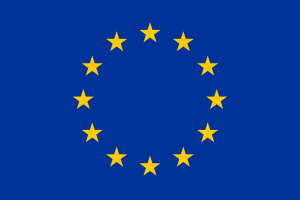RELATIONS WITH THE EU
The European Union and Panama
Since 2012, relations between Panama and the European Union (EU) have been governed by the EU-Central America Association Agreement, which provides the framework for political dialogue, cooperation and trade.
Political relations
Political relations between Panama and the European Union (EU) take place within the framework of the EU-Central America Association Agreement (explanatory document) signed on 29 June 2012 in Tegucigalpa (Honduras). Panama was invited to the negotiations as an observer and became a signatory following its accession to the Secretariat for Central American Economic Integration (SIECA) in 2012.
This wide-ranging and ambitious agreement is based on three priorities: political dialogue, cooperation and the establishment of a free trade area.
The first of these priorities establishes mechanisms for political dialogue to enable a permanent platform to be maintained for the EU and Panama to exchange views on human rights, governance, sustainable development, climate change, democracy, gender equality, conflict prevention, combating drugs and arms trafficking, corruption and organized crime, among others.
Until the Association Agreement came into force, political relations between Panama and the EU were governed by the Political Dialogue and Cooperation Agreement, signed in 2003, which aimed to strengthen relations through the development of political dialogue and closer cooperation.
Economic relations
Panama and the EU have developed their economic relations gradually, by strengthening trade and their commitment to promoting access for Panamanian and Central American goods to European markets.
Panama is today a medium/high income country, with economic growth among the fastest in Latin America over the last decade, driven by the expansion of the Panama Canal and large public infrastructure projects.
Accordingly, relations with the EU have contributed to this strong economic growth with a positive impact on improvements in social indicators.
Trade relations
The EU and Panama are committed to strengthening their trade relations through the EU-Central America Association Agreement (explanatory document), signed in 2012, which establishes a free trade area between the EU and Central America.
The trade dimension of the Association Agreement has been provisionally applied since 1 August 2013 with Panama, which has boosted trade flows and opened up markets for goods, government procurement, services and investment on both sides, thus increasing benefits for consumers and contributing to the creation of a stable business and investment environment.
This is a region-to-region agreement that the Central American countries negotiated as a bloc, sharing the same vision and position. In fact, this has been one of the EU's objectives in its policy towards Central America, promoting regional integration and reducing barriers to intraregional trade. This has also made it possible to strengthen the competitiveness of the region and its ability to attract investment.
Panama and the other countries in the region have mobilised the benefits and used the tools of the agreement to diversify their exports and attract more European investment.
As a result, trade between Panama and the EU grew by 11.53 % between 2014 and 2015. Here are some figures:
- At 27.5 % of total exports, the EU was the main market for Panamanian goods in 2015.
- For its part, Panama imported EU goods worth €1 280 000 000, 11.7 % of total imports and an increase of 26.1 % from the previous year.
- In terms of items, the EU imported mainly machinery and transport equipment (38.7 %) and food (35.5 %) from Panama.
- By contrast, Panama imported machinery and transportation equipment (33.5 %) and chemicals and derivatives (29.7 %).
EU Foreign Direct Investment in Panama was €4 700 000 in 2014.
ACCESS2MARKETS
Exporting from the EU, importing to the EU... Everything you need to know: product-by-product information on tariffs and taxes, customs procedures, rules of origin, trade barriers, product requirements, statistics for all EU countries and over 120 export markets worldwide. To find out in detail visit the link: https://trade.ec.europa.eu/access-to-markets/en/home
Technical and financial cooperation
Through the cooperation dimension of the EU-Central America Association Agreement (explanatory document), signed in 2012, the EU and Central America intend to contribute to consolidating, updating and expanding the objectives and priority areas for financial and technical assistance between both regions.
However, the high economic development indicators that Panama has recorded in recent years led to the country ‘graduating’ from the cooperation provided by the EU for the financial period 2014-2020.
However, Panama will continue to benefit from the EU's thematic lines, the regional programme for Latin America and the sub-regional programme for Central America.
Humanitarian aid
The EU channels its humanitarian aid to Panama through the European Commission's Department of Humanitarian Aid and Civil Protection (ECHO).
The ECHO's efforts go far beyond the emergency stage and include two types of projects:
- Activities to reduce risks as one of the main areas of assistance; and
- Improvements in disaster preparedness, disaster risk prevention and resilience through the DIPECHO programme (Disaster Preparedness ECHO), which provides vulnerable communities with simple, cost-effective preparatory measures that make it possible to save lives when disasters strike, to reduce damage efficiently and increase the capacity of communities to react to future threats.
For 2015-2017, the European Commission has allocated €14 million to respond to the effects of the drought currently affecting more than 6.2 million people in the Caribbean. The purpose of the aid is to help reduce the impact of drought on the lives of vulnerable populations and to strengthen food security, nutrition and access to health services.
